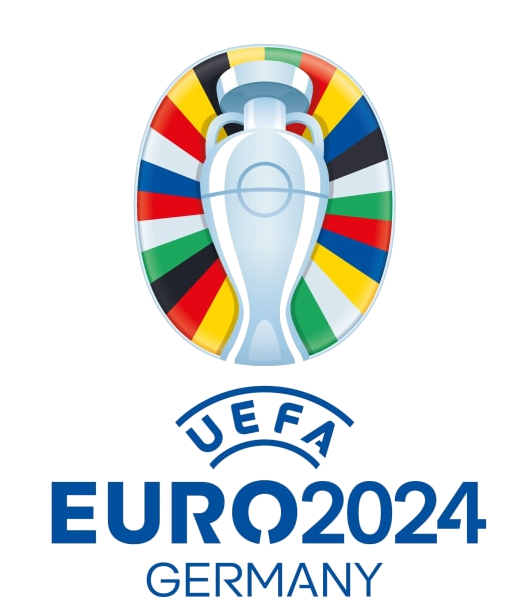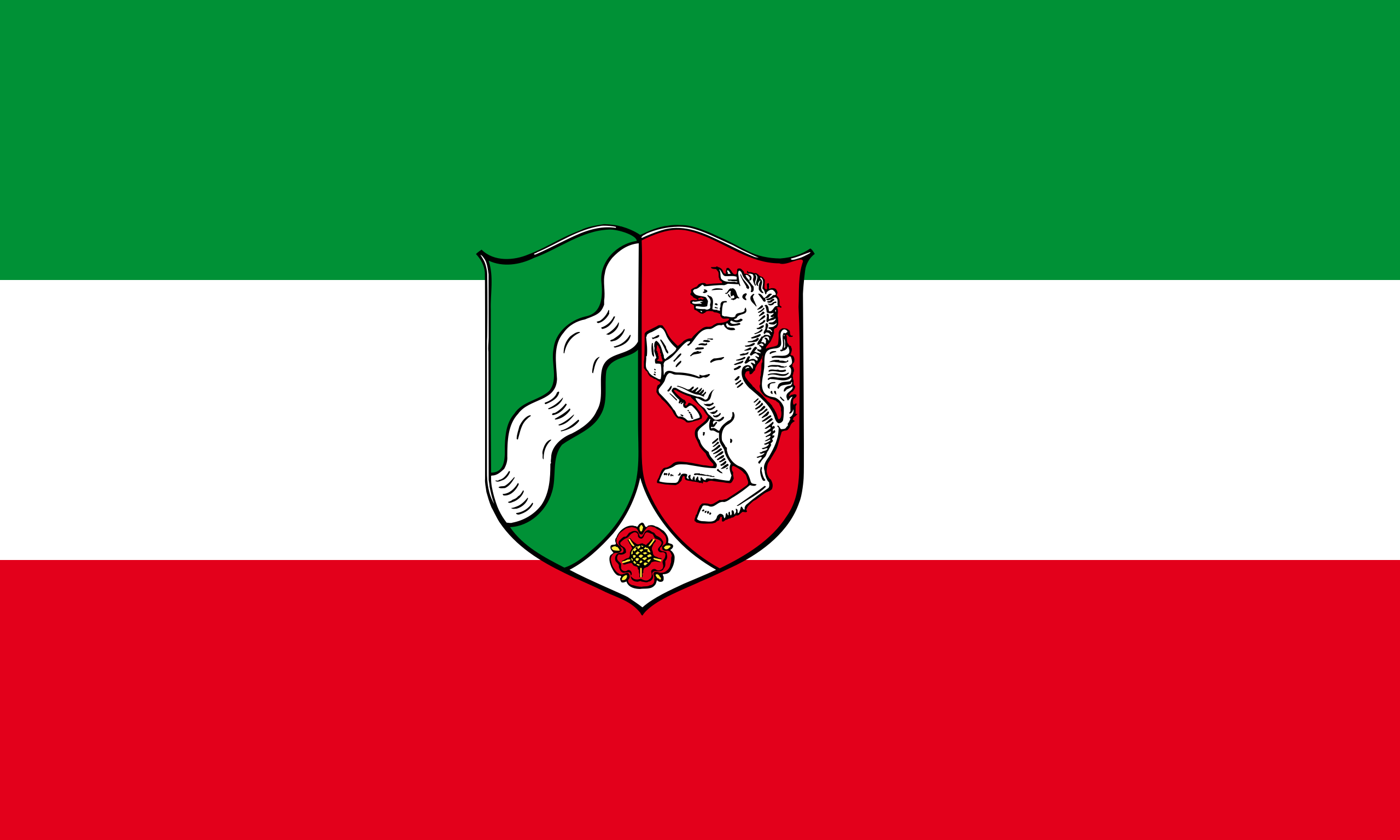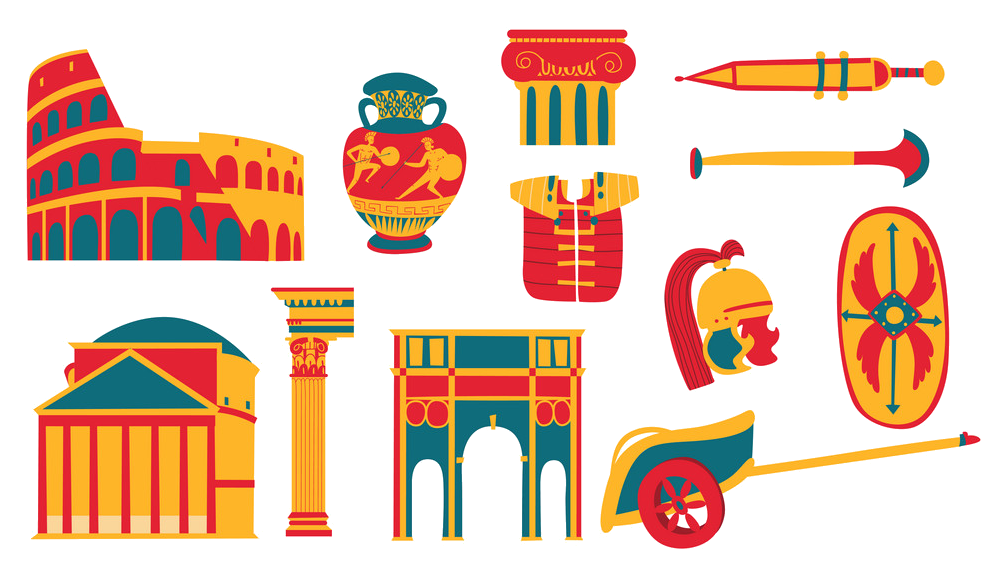 Germany
Germany
 FIFA Fussball-Weltmeisterschaft 2006
FIFA Fussball-Weltmeisterschaft 2006

 UEFA European Championship 2024
UEFA European Championship 2024

 History
History

 North Rhine-Westphalia
North Rhine-Westphalia
 Silk road
Silk road

 Cities founded by the Romans
Cities founded by the Romans

 World Heritage
World Heritage

Köln (kölsch Kölle) ist mit mehr als einer Million Einwohnern die bevölkerungsreichste Stadt des Landes Nordrhein-Westfalen sowie nach Berlin, Hamburg und München die viertgrößte Stadt Deutschlands. Die kreisfreie Stadt gehört zum Regierungsbezirk Köln und ist das Zentrum des Ballungsraumes zwischen Kölner Bucht und Oberbergischem Land (siehe auch Region Köln/Bonn) mit gut vier Millionen Einwohnern. Sie ist zugleich das rheinische Bevölkerungszentrum der Metropolregion Rhein-Ruhr mit etwa zehn Millionen Einwohnern. Die heutige Metropole am Rhein wurde in römischer Zeit unter dem Namen Oppidum Ubiorum gegründet und im Jahr 50 n. Chr. als Colonia Claudia Ara Agrippinensium (kurz Colonia oder CCAA) zur Stadt erhoben.
Köln besitzt als Wirtschafts- und Kulturmetropole internationale Bedeutung. Sie zählt zu den wichtigsten Standorten der Chemie- und Automobilindustrie weltweit und beherbergt, teilweise zusammen mit einigen ihrer Vororte, Firmensitze und Produktionsstätten von zwölf internationalen Automobilmarken wie Ford und Toyota sowie zahlreicher Chemiekonzerne wie Lanxess. Die Karnevalshochburg ist außerdem Sitz vieler öffentlicher Verbände und professioneller Sportvereine. Zahlreiche Fernsehsender, Filmstudios, Musikproduzenten, Verlagshäuser und andere Medienunternehmen wie RTL und der WDR haben hier ihren Standort. Köln gilt ferner als eines der führenden Zentren des weltweiten Kunsthandels. Darüber hinaus zählt die Stadt vor allem aufgrund des bedeutenden Kölner Doms und ihrer romanischen Kirchen sowie weiterer mittelalterlicher Baudenkmäler, einer über 2000-jährigen Stadtgeschichte, bedeutsamer Veranstaltungen sowie ihrem kulturellen und kulinarischen Erbe zu den wichtigsten Reisezielen innerhalb Europas. Ebenfalls ist Köln bedeutender Kongress- und Messestandort: die Fototechnikmesse Photokina, die Fitness- und Gesundheitsmesse FIBO, die Süßwarenmesse und die Videospielmesse Gamescom gelten als Weltleitmessen, die Art Cologne als älteste Kunstmesse der Welt.[4] Dank der Universität zu Köln (etwa 50.000 Studierende), der Technischen Hochschule Köln (etwa 25.000 Studierende) und zahlreicher weiterer Hochschulen stellt sie obendrein den größten Bildungs- und Forschungsstandort im Westen Deutschlands dar.
Köln ist Sitz der größten römisch-katholischen Diözese Deutschlands[5] und war bis 1803 Sitz eines Kurfürstentums.
Die günstige Lage am Rhein mit der Querung bedeutender West-Ost-Handelsstraßen und dem Sitz weltlicher sowie insbesondere kirchlicher Macht trug im Heiligen Römischen Reich zur überregionalen Geltung Kölns bei. Als Hansestadt wurde sie durch Freihandel zu einem wichtigen Handelsstandort. Ihre Bedeutung als Verkehrsknotenpunkt zeigen heute der umfangreiche Schienenpersonenfernverkehr sowie der Bahnhof Eifeltor, der zu den größten Containerumschlagbahnhöfen Europas gehört. Ergänzt wird die Infrastruktur durch vier Binnenhäfen und den Flughafen Köln/Bonn.
科隆的历史可以追溯到公元前1世纪。那时罗马帝国正称雄欧洲,皇帝奥古斯都派驸马阿格里帕挥师北进,抵达莱茵河边,与河东为数众多的日耳曼部落隔 河对峙。阿格里凰招募盟友乌比尔部落到河西来建起军营要塞,共同防守新开拓的边地。这是公元前38年的事。又过了几十年,营寨四周渐成街市。这时,阿格里 帕的外孙女,出生于此地的阿格里皮娜登上了皇后宝座。她恳请皇帝把自己的故乡升格设市。公元50年,后幸福克劳锹一世下诏,授予此地罗马城市的权力,并定 为名为科隆尼亚·克劳狄·阿拉·阿格里皮内西姆。这市名虽长,却道出了城市的历史渊源。科隆尼亚意为罗马人的拓居地,克劳狄是皇帝名,阿拉是乌比尔冲淡落 的祭坛,阿格里皮内西姆则是皇后名加词尾变化而来。天长日久,这冗长的市名遂简化为科隆。罗马时代是科隆历史上的第一个兴盛时期,这里商贾云集,街市繁 盛,城垣高磊,至今犹存的罗马塔(Romerturm),就是那时城垣的一部分。
科隆(德语:Köln,[kœln]  listen 帮助·信息;1919年前德语也拼写为Cöln),是德国第四大城市,是北威州最大的城市,亦是德国内陆最重要的港口之一,莱茵地区的经济文化和历史中心。它已有2000多年的历史,是德国最古老的城市之一。中世纪科隆已经成为一个重要的教会中心和艺术知识中心。科隆在二战期间遭到严重破坏。今天它以其文化和建筑遗产以及许多重要的国际性活动而闻名。
listen 帮助·信息;1919年前德语也拼写为Cöln),是德国第四大城市,是北威州最大的城市,亦是德国内陆最重要的港口之一,莱茵地区的经济文化和历史中心。它已有2000多年的历史,是德国最古老的城市之一。中世纪科隆已经成为一个重要的教会中心和艺术知识中心。科隆在二战期间遭到严重破坏。今天它以其文化和建筑遗产以及许多重要的国际性活动而闻名。
1850年科隆的人口超过十万,在德国算作大城市。加上其第二住址在科隆的人其居民数今天超过一百万。
科隆也有天主教大主教,是天主教科隆大主教座堂所在地。哥特式教堂科隆大教堂1996年被指定为世界文化遗产;它是科隆的主要标志,非官方象征。
43%居民信奉罗马天主教,18%信奉新教,39%信奉其他宗教。直到二战从东德涌来的大量难民,罗马天主教徒一直占科隆居民的大多数。2005年,科隆见证最大的天主教青年盛会。第二十届世界青年日从8月15日星期一到8月21日星期日在科隆举办。
科隆位于欧洲一条重要的东西交通要道与莱茵河的交叉口上。莱茵河是欧洲南北交通的一条重要水道。科隆今天是德国铁路交通最繁忙的枢纽。它的内河港口是欧洲最重要的内河港口之一。
它还是一个文化中心,尤其是创造艺术的一个中心。它的狂欢节非常有名,此外它还是许多协会的驻地。在20世纪的后半叶科隆从一个以重工业为主的城市演变为一个以服务业为主的工业。今天科隆是一个媒体中心,市内还建造了许多新的办公楼。科隆的保险业也有跨地区性的意义。
科隆还以当地的“科隆啤酒”(Kölsch)闻名,Kölsch也是科隆方言,一句笑话说Kölsch是世界上唯一能喝的语言。科隆也是科隆香水或古龙水的发源地。
科隆是德国最大的大学城之一,市内共有85,183名入册的大学生,占市民总数的8.5%。科隆的外国人数量也很高,2004年底市内有175,515名外国籍居民,占市民总数的17.2%,尤其土耳其人社群是德国最大的之一。科隆因此有很长的多文化熔炉的传统。科隆人素来以开放、自由和宽容著称。
ケルン(ドイツ語: Köln [kœln] (![]() 音声ファイル)、ケルン語: Kölle [ˈkœɫə] (
音声ファイル)、ケルン語: Kölle [ˈkœɫə] (![]() 音声ファイル)、英語: Cologne [kəˈloʊn])はドイツではベルリン、ハンブルク、ミュンヘンに次いで4番目に大きな都市である。ノルトライン=ヴェストファーレン州とヨーロッパでは1,000万人以上が住む大都市圏の一つであるライン=ルール大都市圏地域(英語版)内では最大の都市である。ケルン市街地はライン川の両岸にまたがる。市内にはケルン大聖堂 (Kölner Dom) があり、カトリック教会のケルン大司教の拠点がある。ケルン大学(Universität zu Köln) は欧州でも最古で最大の大学の1つである[2]。
音声ファイル)、英語: Cologne [kəˈloʊn])はドイツではベルリン、ハンブルク、ミュンヘンに次いで4番目に大きな都市である。ノルトライン=ヴェストファーレン州とヨーロッパでは1,000万人以上が住む大都市圏の一つであるライン=ルール大都市圏地域(英語版)内では最大の都市である。ケルン市街地はライン川の両岸にまたがる。市内にはケルン大聖堂 (Kölner Dom) があり、カトリック教会のケルン大司教の拠点がある。ケルン大学(Universität zu Köln) は欧州でも最古で最大の大学の1つである[2]。
ケルンは1世紀にローマのコロニアとしてウビイ(英語版)の領域に創建された[3]。ゲルマニア・インフェリオルの州都として462年にフランク王国によって占領されるまで、地域の軍の司令部が置かれていた。中世、東西ヨーロッパを結ぶ重要な交易路の一つとして繁栄した。ケルンはハンザ同盟の主要なメンバーの一員で、中世やルネサンス期にはアルプス以北では最大の都市であった。
第二次世界大戦まで、ケルンは他にもフランスやまたイギリスの支配を幾度か経験している。第二次世界大戦中、ドイツの都市の中でも最も多くの空襲を受けた都市の一つでイギリス空軍(RAF)によって34,711トンの爆弾が都市に落とされた[4]。この空襲の影響でケルンの人口は主に住民の避難によって95%減少し、市街のほとんどが破壊された。出来るだけ多くの歴史的建築物を復元することを意図して、再建の結果として非常に混じり合った独特の都市景観を呈している。
ケルンはラインラントの主要な文化の中心で、30以上の博物館と100以上の美術館を擁している。古代ローマの遺跡から、現代の絵画や彫刻など展示も幅広い。ケルンメッセ(英語版)ではアートケルン(英語版)やimmケルン(英語版)、ゲームズコム、フォトキナなど多くの見本市が開催されている。
Cologne (English: /kəˈloʊn/; German: Köln, pronounced [kœln] ( listen), Ripuarian: Kölle [ˈkœlə] (
listen), Ripuarian: Kölle [ˈkœlə] ( listen)) is the largest city of Germany's most populous federal state of North Rhine-Westphalia, and its 1,075,935 (2016) inhabitants make it the fourth most populous city in Germany after Berlin, Hamburg, and Munich. The largest city on the Rhine, it is also the most populous city both of the Rhine-Ruhr Metropolitan Region, which is Germany's largest and one of Europe's major metropolitan areas, and of the Rhineland. Centred on the left bank of the Rhine, Cologne is about 45 kilometres (28 mi) southeast of North Rhine-Westphalia's capital of Düsseldorf and 25 kilometres (16 mi) northwest of Bonn. It is the largest city in the Central Franconian and Ripuarian dialect areas.
listen)) is the largest city of Germany's most populous federal state of North Rhine-Westphalia, and its 1,075,935 (2016) inhabitants make it the fourth most populous city in Germany after Berlin, Hamburg, and Munich. The largest city on the Rhine, it is also the most populous city both of the Rhine-Ruhr Metropolitan Region, which is Germany's largest and one of Europe's major metropolitan areas, and of the Rhineland. Centred on the left bank of the Rhine, Cologne is about 45 kilometres (28 mi) southeast of North Rhine-Westphalia's capital of Düsseldorf and 25 kilometres (16 mi) northwest of Bonn. It is the largest city in the Central Franconian and Ripuarian dialect areas.
The city's famous Cologne Cathedral (Kölner Dom) is the seat of the Catholic Archbishop of Cologne. There are many institutions of higher education in the city, most notably the University of Cologne (Universität zu Köln), one of Europe's oldest and largest universities[2], the Technical University of Cologne (Technische Hochschule Köln), Germany's largest university of applied sciences, and the German Sport University Cologne (Deutsche Sporthochschule Köln), Germany's only sport university. Cologne Bonn Airport (Flughafen Köln/Bonn) is Germany's seventh-largest airport and lies in the southeast of the city. The main airport for the Rhine-Ruhr region is Düsseldorf Airport.
Cologne was founded and established in Ubii territory in the 1st century AD as the Roman Colonia Claudia Ara Agrippinensium, the first word of which is the origin of its name.[3] An alternative Latin name of the settlement is Augusta Ubiorum, after the Ubii.[4] "Cologne", the French version of the city's name, has become standard in English as well. The city functioned as the capital of the Roman province of Germania Inferior and as the headquarters of the Roman military in the region until occupied by the Franks in 462. During the Middle Ages it flourished on one of the most important major trade routes between east and west in Europe. Cologne was one of the leading members of the Hanseatic League and one of the largest cities north of the Alps in medieval and Renaissance times. Prior to World War II the city had undergone several occupations by the French and also by the British (1918–1926). Cologne was one of the most heavily-bombed cities in Germany during World War II, with the Royal Air Force (RAF) dropping 34,711 long tons (35,268 tonnes) of bombs on the city.[5] The bombing reduced the population by 95%, mainly due to evacuation, and destroyed almost the entire city. With the intention of restoring as many historic buildings as possible, the successful postwar rebuilding has resulted in a very mixed and unique cityscape.
Cologne is a major cultural centre for the Rhineland; it hosts more than 30 museums and hundreds of galleries. Exhibitions range from local ancient Roman archeological sites to contemporary graphics and sculpture. The Cologne Trade Fair hosts a number of trade shows such as Art Cologne, imm Cologne, Gamescom, and the Photokina.
Cologne (Köln en allemand, Kölle en kölsch) est une ville de l'Ouest de l'Allemagne, en Rhénanie-du-Nord–Westphalie. Avec environ un million d'habitants début 2014, Cologne est la plus grande ville du Land, devant Düsseldorf et Dortmund, et la quatrième ville d'Allemagne par sa population, derrière Berlin, Hambourg et Munich. Traversée par le Rhin, son agglomération de plus de deux millions d'habitants constitue le sud de l'aire métropolitaine Rhin-Ruhr, au cœur de la mégalopole européenne. La ville est notamment célèbre pour sa cathédrale, classée au patrimoine mondial de l'Unesco, ainsi que pour l'eau de Cologne.
Fondée par les Romains, qui en firent la capitale de la province de Germanie inférieure, Cologne est la plus ancienne des grandes villes allemandes, ce dont témoigne un important patrimoine antique. Sa situation géographique favorable dans la vallée du Rhin en fait depuis le Moyen Âge un carrefour important en Europe. De tradition catholique, Cologne devient dès le XIVe siècle un important centre culturel grâce à son université - aujourd'hui parmi les plus anciennes au monde. Archevêché, membre de la Ligue hanséatique, elle acquiert le statut de Ville libre d'Empire en 1475. Annexée par la France de 1801 à 1815, puis sous domination prussienne, Cologne est occupée après la Première Guerre mondiale et est victime de 262 bombardements alliés entre 1940 et 1945. Après avoir perdu 95 % de sa population, la ville est reconstruite et de nombreux bâtiments sont restaurés à l'identique.
À l'image de l'Allemagne de l'Ouest, la ville connaît un « miracle économique » (Wirtschaftswunder) et voit sa population s'accroître. Cologne accueille aujourd'hui de nombreux sièges sociaux d'entreprises, ainsi que des évènements d'ampleur internationale dans la Koelnmesse, comme les salons Gamescom et Photokina. Ville touristique, elle dispose d'un important patrimoine religieux (l'église Saint-Martin, les douze basiliques romanes) et de musées (le musée Ludwig, le Musée romain-germanique). Le pont Hohenzollern est en outre le pont ferroviaire le plus fréquenté d'Allemagne. Enfin, l'urbanisme de Cologne est en pleine mutation et comporte deux nouveaux quartiers issus d'une opération de rénovation urbaine et destinés à accueillir des entreprises dans les nouvelles technologies : MediaPark et Rheinauhafen – ce dernier étant en cours d'aménagement.
Colonia (AFI: /koˈlɔnja/[2]; in tedesco Köln ascolta[?·info], in dialetto locale Kölle, in francese e inglese Cologne) è una città extracircondariale di 1 075 935 abitanti, con l'agglomerato urbano 1 800 000 abitanti) della Germania, la quarta per numero di abitanti e la più grande del Land della Renania Settentrionale-Westfalia. È considerata la capitale economica, culturale e storica della Renania, quasi completamente ricostruita dopo i bombardamenti della seconda guerra mondiale.
Colonia (en alemán: Köln  [kœln] (?·i); en kölsch: Kölle
[kœln] (?·i); en kölsch: Kölle  [ˈkœɫə] (?·i)) es la cuarta ciudad más grande de Alemania, precedida por Berlín, Hamburgo y Múnich, y la más poblada dentro del Estado federado de Renania del Norte-Westfalia, aunque Düsseldorf es la capital del Estado. Fundada en el año 38 a. C. como Oppidum Ubiorum («Ciudad de los Ubios»), fue posteriormente declarada colonia romana con el nombre de Colonia Claudia Ara Agrippinensium en alusión a la emperatriz Agripina, esposa del emperador Claudio y madre de Nerón.
[ˈkœɫə] (?·i)) es la cuarta ciudad más grande de Alemania, precedida por Berlín, Hamburgo y Múnich, y la más poblada dentro del Estado federado de Renania del Norte-Westfalia, aunque Düsseldorf es la capital del Estado. Fundada en el año 38 a. C. como Oppidum Ubiorum («Ciudad de los Ubios»), fue posteriormente declarada colonia romana con el nombre de Colonia Claudia Ara Agrippinensium en alusión a la emperatriz Agripina, esposa del emperador Claudio y madre de Nerón.
Es un importante centro económico y cultural de importancia internacional y representa uno de los enclaves más importantes del mundo artístico. Es famoso por ser la sede del carnaval más espectacular del país. Además es la sede de muchas asociaciones, empresas mediáticas y numerosas cadenas de televisión, discográficas y editoriales. Su importancia reside en parte en su monumento más emblemático: la catedral, su historia de más de 2000 años, sus numerosos eventos internacionales, como su cultura y su gastronomía que lo hacen uno de los destinos más visitados de Europa. La Universidad de Colonia (alrededor de 50 000 estudiantes), la Escuela Técnica Superior de Colonia (alrededor de 25 000 estudiantes) y demás escuelas superiores representa la gran importancia educativa y de investigación dentro de la región del Rin-Ruhr.
La excelente ubicación en el río Rin, en mitad de las principales rutas comerciales entre este y oeste, como sede secular como Ciudad Libre Imperial tanto como su poder eclesiástico a través del arzobispado en el Sacro Imperio Romano le consiguió granjearse un gran prestigio e importancia en el país. Como ciudad hanseática ganó mucha importancia comercial a través del libre comercio con el resto de la Hansa. Su importancia como centro neurálgico de las comunicaciones siguen hoy día con la gran cantidad de viajeros en tren que salen cada día de la Estación Central (Hauptbahnhof), y la estación Köln Eifeltor, que es uno de los mayores patios de carga ferroviarios para el transporte de mercancías. La infraestructura ferrovial se complementa con cuatro puertos interiores para los trenes. El transporte aéreo también tiene su importancia en la ciudad debido al aeropuerto de Colonia/Bonn.
Кёльн (нем. Köln, рип. Kölle [ˈkœɫə], лат. Colonia) — город в Федеративной Республике Германия, в земле Северный Рейн-Вестфалия. Город-миллионник Кёльн является четвёртым по населению и третьим по площади городом Германии, а также одним из крупнейших экономических и культурных центров страны. Кроме того, Кёльн — крупнейший центр 10-миллионной надагломерации Рейнско-Рурского региона и центр 2-миллионной моноцентрической агломерации. «Метрополия на Рейне», как часто называют Кёльн, — это один из старейших городов Германии, который играл значительную роль в истории Европы на протяжении всего своего существования, начиная с Римской эпохи. Кёльн знаменит своим главным храмом — Кёльнским собором, одним из главных католических храмов Германии.
Dieses Video oder Audio ist eventuell urheberrechtlich geschützt. Es wird nur für Bildungszwecke genutzt. (Quelle: Drone Snap)











